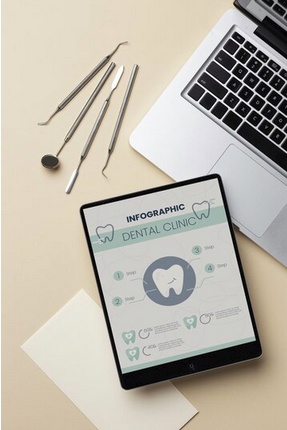Introduction:
In the digital age, a dental practice's online presence is often the first interaction patients have with the clinic. A well-crafted dental website design is not just a digital brochure; it's a crucial element of a successful marketing strategy and patient engagement. This article explores the key considerations and strategies for creating an effective dental website that not only showcases the practice but also fosters a positive and inviting patient experience.
User-Friendly Interface and Navigation:
The foundation of a winning dental webdesign lies in its user-friendliness. Patients should be able to navigate the website effortlessly to find the information they need. A clean and intuitive interface, coupled with easy-to-use navigation menus, ensures a positive user experience. A patient-friendly website encourages visitors to explore various sections, learn about services, and ultimately schedule appointments or contact the dental practice.
Responsive Design for Accessibility:
With the prevalence of smartphones and tablets, ensuring that a dental website is responsive is paramount. Responsive design adapts the layout and content of the website to different screen sizes, providing a seamless experience across devices. This not only caters to the increasing number of users accessing websites on mobile devices but also positively impacts search engine rankings, as search engines prioritize mobile-friendly websites.
Compelling Visuals and Imagery:
The dental field is inherently visual, and high-quality imagery plays a crucial role in conveying professionalism and creating a positive first impression. Utilizing professional photographs of the dental team, clinic facilities, and before-and-after shots of dental procedures adds authenticity and helps build trust. Eye-catching visuals contribute to a welcoming atmosphere, reflecting the care and attention to detail patients can expect from the dental practice.
Clear and Informative Content:
While aesthetics are important, the content on a dental website is equally crucial. Clear and informative content helps patients understand the services offered, the expertise of the dental team, and any specializations within the practice. Utilizing plain language and avoiding jargon ensures that the content is accessible to a diverse audience. Including educational content about oral health and hygiene also positions the dental practice as a reliable source of information.
Online Appointment Scheduling:
Convenience is key in today's fast-paced world, and integrating online appointment scheduling into the dental website is a game-changer. Patients appreciate the ability to book appointments at their convenience without the need for a phone call. Implementing user-friendly scheduling tools not only enhances the patient experience but also streamlines administrative processes for the dental practice.
Patient Testimonials and Reviews:
Building trust is a significant aspect of dental website design. Including patient testimonials and reviews provides social proof of the quality of care and services offered by the dental practice. Positive feedback from satisfied patients can influence the decision-making process of potential new patients. Responding to reviews, both positive and constructive, demonstrates transparency and a commitment to patient satisfaction.
Educational Resources and Blog:
A dental website can serve as a valuable resource for patients by offering educational content and a regularly updated blog. Informative articles on oral health, preventive care, and common dental procedures not only position the dental practice as an authority in the field but also contribute to search engine optimization (SEO). Educational resources demonstrate a commitment to patient well-being beyond the confines of the dental chair.
Conclusion:
Crafting a winning dental website design involves a thoughtful blend of aesthetics, functionality, and patient-centric features. A user-friendly interface, responsive design, compelling visuals, informative content, online appointment scheduling, patient testimonials, and educational resources collectively contribute to a website that not only attracts visitors but also converts them into satisfied patients. In the competitive landscape of dental care, a well-designed website is a powerful tool for building a positive online presence and fostering lasting patient relationships.


No comments yet